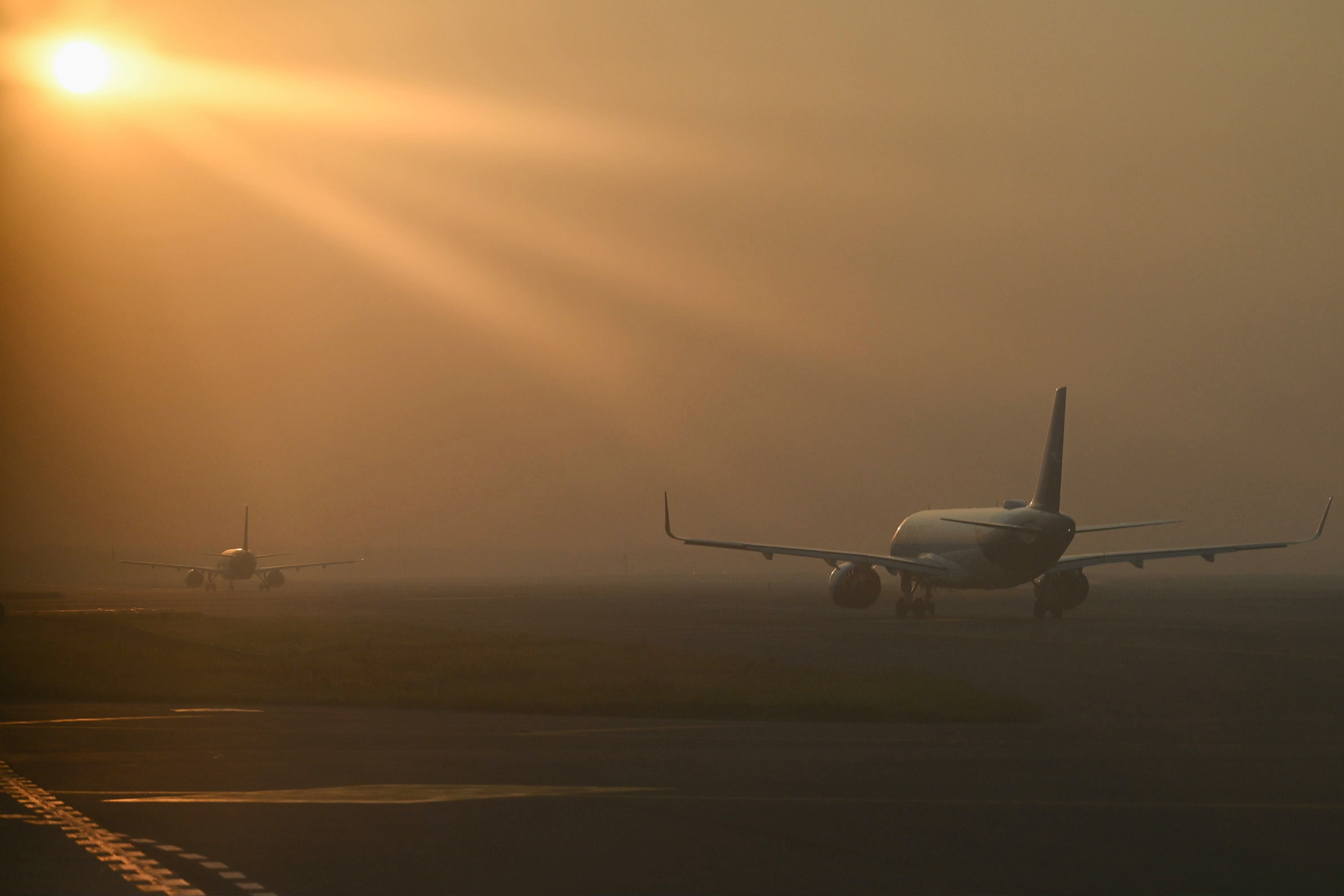Dust in Delhi air puts plane engines at ‘serious risk’ of wear and tear
Shifting flights to nighttime can reduce dust ingestion by nearly a third, study says
Your support helps us to tell the story
From reproductive rights to climate change to Big Tech, The Independent is on the ground when the story is developing. Whether it's investigating the financials of Elon Musk's pro-Trump PAC or producing our latest documentary, 'The A Word', which shines a light on the American women fighting for reproductive rights, we know how important it is to parse out the facts from the messaging.
At such a critical moment in US history, we need reporters on the ground. Your donation allows us to keep sending journalists to speak to both sides of the story.
The Independent is trusted by Americans across the entire political spectrum. And unlike many other quality news outlets, we choose not to lock Americans out of our reporting and analysis with paywalls. We believe quality journalism should be available to everyone, paid for by those who can afford it.
Your support makes all the difference.Aircraft arriving at Delhi’s main airport swallow large quantities of dust, which may accumulate over time and put their engines at “serious” risk of wear and tear, a new study has warned.
The research, which is yet to be peer-reviewed, suggests moving more flights at the Indira Gandhi International Airport to a night-time schedule to reduce engine dust ingestion by about a third.
“Dust and sand are dangerous to aircraft because dust melts to form glassy deposits on blades or hard mineral crusts inside engines. The crusts disrupt airflow and cause overheating resulting in accelerated engine wear,” Claire Ryder, the lead author of the study from the University of Reading in the UK, said.
“Although the amount of dust ingested per flight is not huge, the amounts quickly add up. A plane consuming five grams of dust per arrival and departure will eat 10kg of dust over 1,000 flights.”
Researchers analysed about two decades of satellite and atmospheric data to calculate the dust ingested by planes at some of the world’s busiest airports.
The study, to be published this week in the journal Natural Hazards, reveals that the largest quantities of dust are ingested by planes at airports close to the Sahara desert and in the Middle East and north India during dust storms.
“Atmospheric mineral dust aerosol constitutes a threat to aircraft engines from deterioration of internal components,” scientists warned.
Aircraft landing in Delhi during summer ingest the most dust, gathering an average of 6.6g per arrival and over 4g on departure, according to the study. This is followed by flights landing in Niger’s Niamey at 4.7g per arrival and in Dubai at 4.3g.
Researchers also found that aircraft tend to ingest more dust as they hover above these airports waiting for permission to land.
Waiting to land for 10-15 minutes at a one-kilometre altitude can lead to more dust ingestion than during the take-off and climb phases of a flight, researchers said.

At the Delhi airport during summer, holding at 1km altitude contributes 50 per cent of total dust ingestion, researchers found. Shifting flight landing at Delhi and Dubai to nighttime can reduce engine dust ingestion by nearly a third.
Researchers predict that climate change may lead to an even dustier world as temperatures rise and deserts expand.
But current climate models do not provide a consensus on this as dust emissions depend on several factors, including rainfall, soil moisture, surface wind patterns, and vegetation cover.

Join our commenting forum
Join thought-provoking conversations, follow other Independent readers and see their replies
Comments